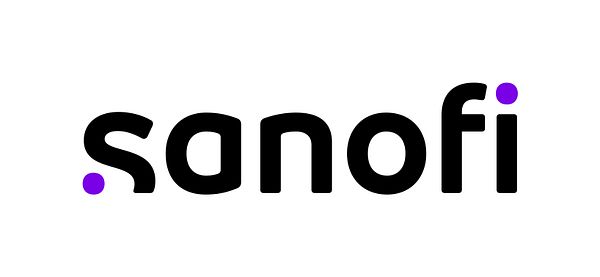Pressmeddelande -
ORIGIN Results on Lantus® Cardiovascular Safety Integrated Into European Union Product Label
Paris, France - June 5, 2013 - Sanofi (EURONEXT: SAN and NYSE: SNY) announced today thatthe Committee for Medicinal Products for Human Use (CHMP) of the European Medicines Agency(EMA) has issued a positive opinion for inclusion in the Lantus® (insulin glargine) product label of safety and efficacy data from the insulin glargine cardiovascular (CV) outcomes trial ORIGIN(Outcome Reduction with Initial Glargine INtervention). The revised label is evidence of Sanofi’s ongoing commitment to further assert the well-known safety and efficacy profile of insulin glargine,the most-studied basal insulin. The indication for the use of Lantus® remains unchanged.
ORIGIN was a landmark, seven-year clinical trial that randomized over 12,500 participants at high CV risk with impaired fasting glucose, impaired glucose tolerance or early type 2 diabetes mellitusto a once-daily injection of Lantus® versus standard care of their hyperglycemia (treatment limited tonone or at most one oral antidiabetic agent).
Results from the ORIGIN trial included in the product label are as follows: Insulin glargine did notalter the relative risk for CV disease and CV mortality when compared to standard of care. ORIGINshowed no differences between insulin glargine and standard care treatment regarding the coprimary endpoints of the composite of time to first occurrence of CV death, non-fatal myocardialinfarction, or non-fatal stroke (hazard ratio [HR]: 1.02; p=0.63, NS); and the composite of CV death,or non-fatal myocardial infarction, or non-fatal stroke, or revascularization procedure, or hospitalization for heart failure (HR: 1.04; p=0.27, NS).
The rates of severe hypoglycemia (affected participants per 100 participant years of exposure) were1.05 and 0.30 for insulin glargine and standard care groups, respectively. Rates of confirmed non-severe hypoglycemic events were 7.71 for insulin glargine and 2.44 for standard care groups. Overthe course of this seven-year study, 42% of the insulin glargine group did not experience any hypoglycemia.
“The addition of the ORIGIN results to the Lantus® label is particularly important in the currentcontext of the increasing debate on cardiovascular safety of diabetes treatments, and it reinforcesthe proven efficacy and safety profiles of Lantus®,” commented Pierre Chancel, Senior VicePresident, Global Diabetes, Sanofi. “Lantus® has helped millions of people manage their diabetesfor over a decade, resulting in trust and reassurance, which is key to successful disease management.”
ORIGIN was academically led and analyzed by a team of diabetes and cardiovascular diseas eexperts with sponsorship from Sanofi.
About ORIGIN
ORIGIN (Outcome Reduction with Initial Glargine Intervention) is a unique, seven-year landmarkcardiovascular (CV) outcomes trial, evaluating Lantus® (insulin glargine) versus standard care inover 12,500 individuals who are at high CV risk with pre-diabetes or early type 2 diabetes mellitus.Spanning 40 countries worldwide, it is the world’s longest and largest randomized clinical trial of its type in this population, and the first to formally evaluate the effects of insulin glargine on CV outcomes. The trial used a 2x2 factorial design to determine whether using insulin glargine to target fasting normoglycemia (FPG ≤ 95mg/dL) compared to standard glycemic management, andseparately omega-3 polyunsaturated fatty acids (PUFA) vs placebo, could reduce cardiovascularmorbidity and/or mortality.[1] Participants assigned to standard care were treated on the basis of theinvestigator’s best judgment and local guidelines, including lifestyle measures, dietary modifications,and non-glargine anti-diabetic agents.
There were no differences found between insulin glargine and standard care for the othersecondary outcomes which included a composite microvascular outcome (metrics of kidney or eyedisease; [HR: 0.97; p=0.43]), and all-cause mortality (HR: 0.98; p=0.70). Insulin glargine achievedtargeted long-term glycemic control (median fasting plasma glucose 5.2 mmol/L and HbA1C 6.2%),which was sustained over the mean of 6.2 years of follow-up. At the end of the trial, there wasmodest mean increase in body weight from baseline of 1.4 kg in the insulin glargine group and amean decrease of 0.8 kg in the standard care group.
About Diabetes
Diabetes is a chronic disease that occurs as type 1 diabetes, which is an autoimmune diseasecharacterized by the lack of insulin (the hormone that regulates blood glucose concentrations) production by the pancreas, and type 2, a metabolic disorder in which there are two main biologicaldefects: a deficient production of insulin and reduced ability of the body to respond to the insulinbeing produced. Type 1 and type 2 diabetes are characterized by an increase in blood glucose concentrations (hyperglycemia). Over time, uncontrolled hyperglycemia leads to the macrovascular and microvascular complications of diabetes. Macrovascular complications, which affect the large blood vessels, include heart attack, stroke and peripheral vascular disease. Microvascular complications affect the small blood vessels of the eyes (retinopathy), kidney (nephropathy) and nerves (neuropathy). The global incidence of diabetes is growing at an alarming rate, with more than 371 million people worldwide living with the condition today.[2]
About Sanofi Diabetes
Sanofi strives to help people manage the complex challenge of diabetes by delivering innovative, integrated and personalized solutions. Driven by valuable insights that come from listening to and engaging with people living with diabetes, the Company is forming partnerships to offer diagnostics, therapies, services and devices, including bloodglucose monitoring systems. Sanofi markets both injectable and oral medications for people with type 1 or type 2 diabetes.
About Sanofi
Sanofi, an integrated global healthcare leader, discovers, develops and distributes therapeutic solutions focused onpatients’ needs. Sanofi has core strengths in the field of healthcare with seven growth platforms: diabetes solutions,human vaccines, innovative drugs, consumer healthcare, emerging markets, animal health and the new Genzyme. Sanofiis listed in Paris (EURONEXT: SAN) and in New York (NYSE: SNY).
References
1. ORIGIN Trial Investigators, Gerstein H, Yusuf S, et al. Rationale, design, and baseline characteristics for a largeinternational trial of cardiovascular disease prevention in people with dysglycemia: the ORIGIN Trial (OutcomeReduction with an Initial Glargine Intervention). Am Heart J 2008; 155(1): 26-32.
2. International Diabetes Federation. IDF Diabetes Atlas, 5th edition. Brussels, Belgium, 2011.http://www.idf.org/diabetesatlas (Accessed: February 14, 2013)
Contacts:
Corporate Media Relations
Marisol Peron
Tel: +33 1 53 77 45 02
Mobile: +33 6 08 18 94 78
E-mail: mr@sanofi.com
Investor RelationsSébastien
Martel
Tel: + 33 1 53 77 45 45
E-mail: ir@sanofi.com
Global Diabetes Communications
Tilmann Kiessling
Mobile: +49 17 26 15 92 91
E-mail: Tilmann.Kiessling@sanofi.com
Ämnen
Kategorier
Sanofi är ett ledande globalt läkemedelsföretag som identifierar, utvecklar och distribuerar behandlingslösningar som syftar till att förbättra människors liv. Sanofi inriktar sig på sju stora områden: diabetesbehandling, vacciner, innovativa läkemedel, sällsynta sjukdomar, egenvårdsprodukter, utvecklingsmarknader och veterinärmedicin. Sanofi är börsnoterat i Paris (EURONEXT: SAN) och i New York (NYSE: SNY). www.sanofi.se

